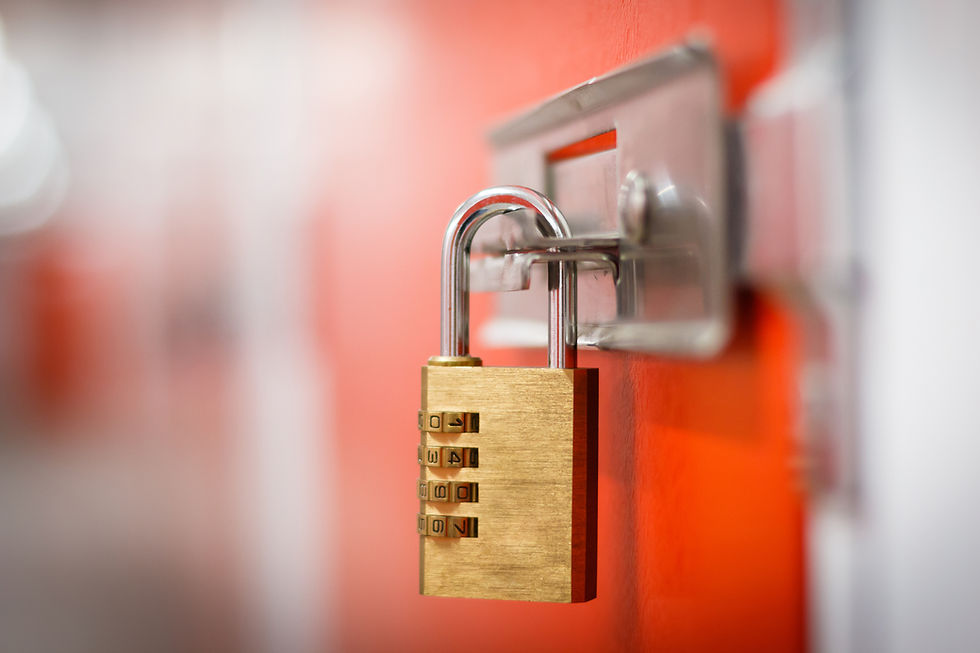Self-Storage Tips from Phoenix Collision: Maximize Your Space and Keep Your Items Safe
- Phoenix Collision

- Jul 16, 2024
- 3 min read
Updated: Jul 18, 2024

Using a self-storage unit can be a fantastic way to free up space at home or store belongings during a move. However, without climate control or indoor storage, it's essential to be strategic about how you pack and store your items. At Phoenix Collision, we're here to help with some top tips on how to maximize your storage space and keep your items safe.
1. Choose the Right Packing Materials
Proper packing materials are crucial for protecting your belongings. Here’s what you need:
Sturdy Boxes: Use strong, durable boxes to prevent collapsing and protect items.
Plastic Bins: These are great for keeping moisture out and stacking efficiently.
Bubble Wrap and Packing Paper: Protect fragile items with adequate padding.
Furniture Covers: Use covers to protect furniture from dust and moisture.
2. Label Everything
Clearly label each box with its contents and the room it belongs to. This will save you time when you need to find specific items and make unpacking easier.
Detailed Labels: Include a brief inventory of the box’s contents.
Color Coding: Use different colors for each room to quickly identify where each box belongs.
3. Create an Inventory List
Keep an inventory list of all the items stored in your unit. This will help you keep track of your belongings and ensure nothing gets misplaced.
Digital or Paper List: Choose the format that works best for you, but ensure it’s updated regularly.
Photos: Consider taking photos of valuable items for reference.
4. Utilize Vertical Space
Maximize your storage space by using the full height of the unit. Stack boxes and bins carefully, placing heavier items at the bottom and lighter ones on top.
Shelving Units: If possible, use free-standing shelves to organize and access items more easily.
Stack Strategically: Ensure the heaviest and sturdiest boxes are at the bottom to prevent crushing.
5. Protect Against Moisture
Without climate control, moisture can be a concern. Take steps to protect your items from potential damage:
Moisture Absorbers: Place desiccant packs or moisture absorbers in the unit to keep humidity levels down.
Raised Pallets: Use wooden pallets to keep items off the ground and away from potential moisture.
Plastic Bins: Opt for sealed plastic bins instead of cardboard boxes to keep out moisture.
6. Store Items Smartly
Organize your unit to make the best use of space and ensure easy access:
Frequently Used Items: Place items you’ll need to access frequently near the front of the unit.
Pathways: Leave a clear path through the unit to access items at the back.
Heavy Items: Store heavy items on the bottom to prevent damage to lighter items.
7. Avoid Storing Prohibited Items
Ensure you’re aware of what items are not suitable for storage, such as:
Perishable Goods: Food and plants can attract pests and deteriorate.
Hazardous Materials: Flammable liquids, chemicals, and explosives are not allowed.
Valuables: Keep cash, jewelry, and important documents in a more secure location.
8. Inspect and Maintain
Regularly inspect your storage unit to ensure your items remain in good condition:
Check for Pests: Look for signs of pests and take action if needed.
Monitor Moisture: Ensure desiccant packs are replaced regularly and there are no signs of mold or mildew.
Reorganize as Needed: Adjust the organization of your unit to maintain accessibility and safety.
Maximizing your storage space and keeping your items safe without climate control or indoor storage is entirely possible with the right approach. At Phoenix Collision, we’re committed to helping you protect your belongings, whether they’re in storage or your vehicle is in our care.
For more storage tips or to learn about our comprehensive auto body repair services, contact Phoenix Collision today. We’re here to provide expert advice and solutions tailored to your needs.








